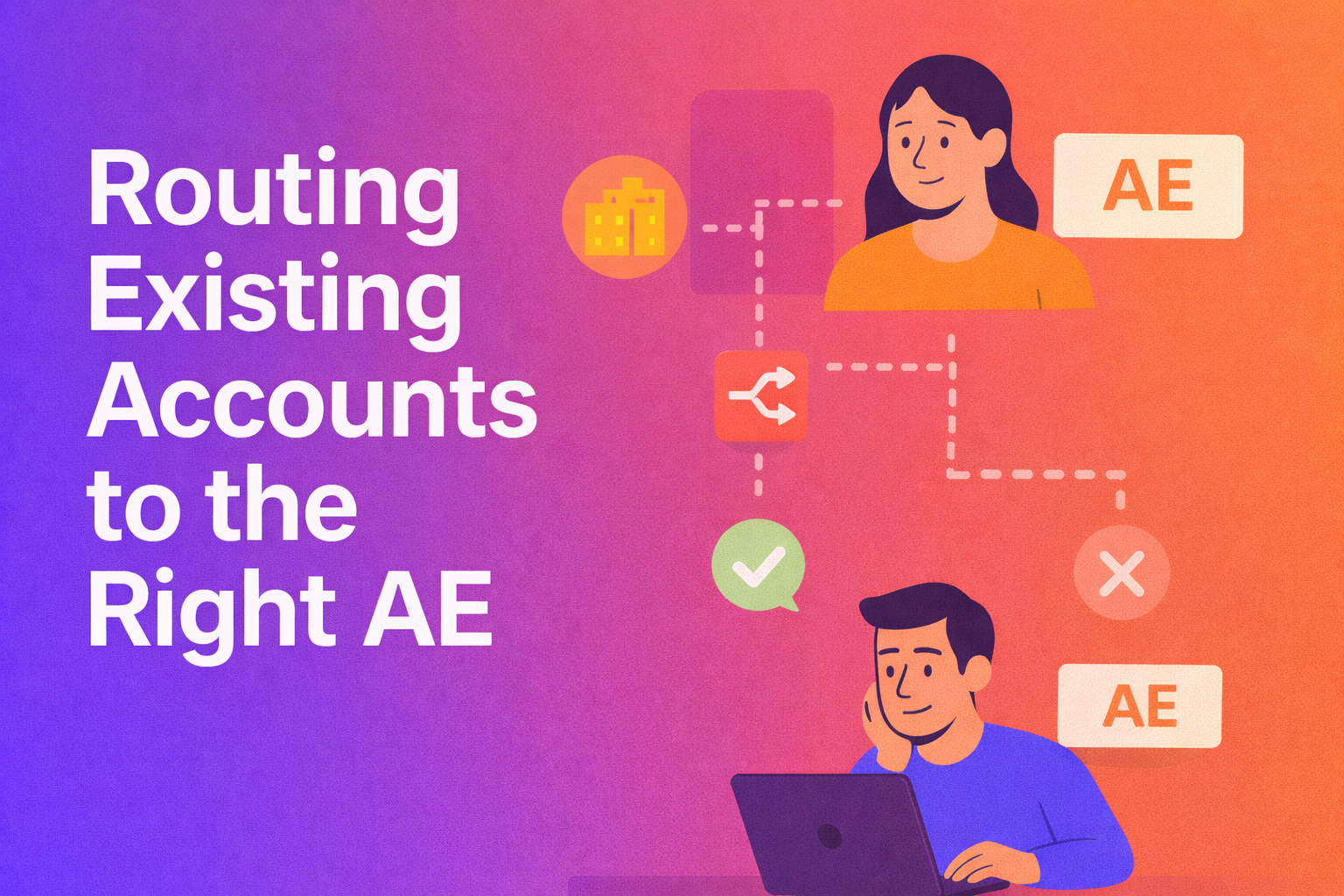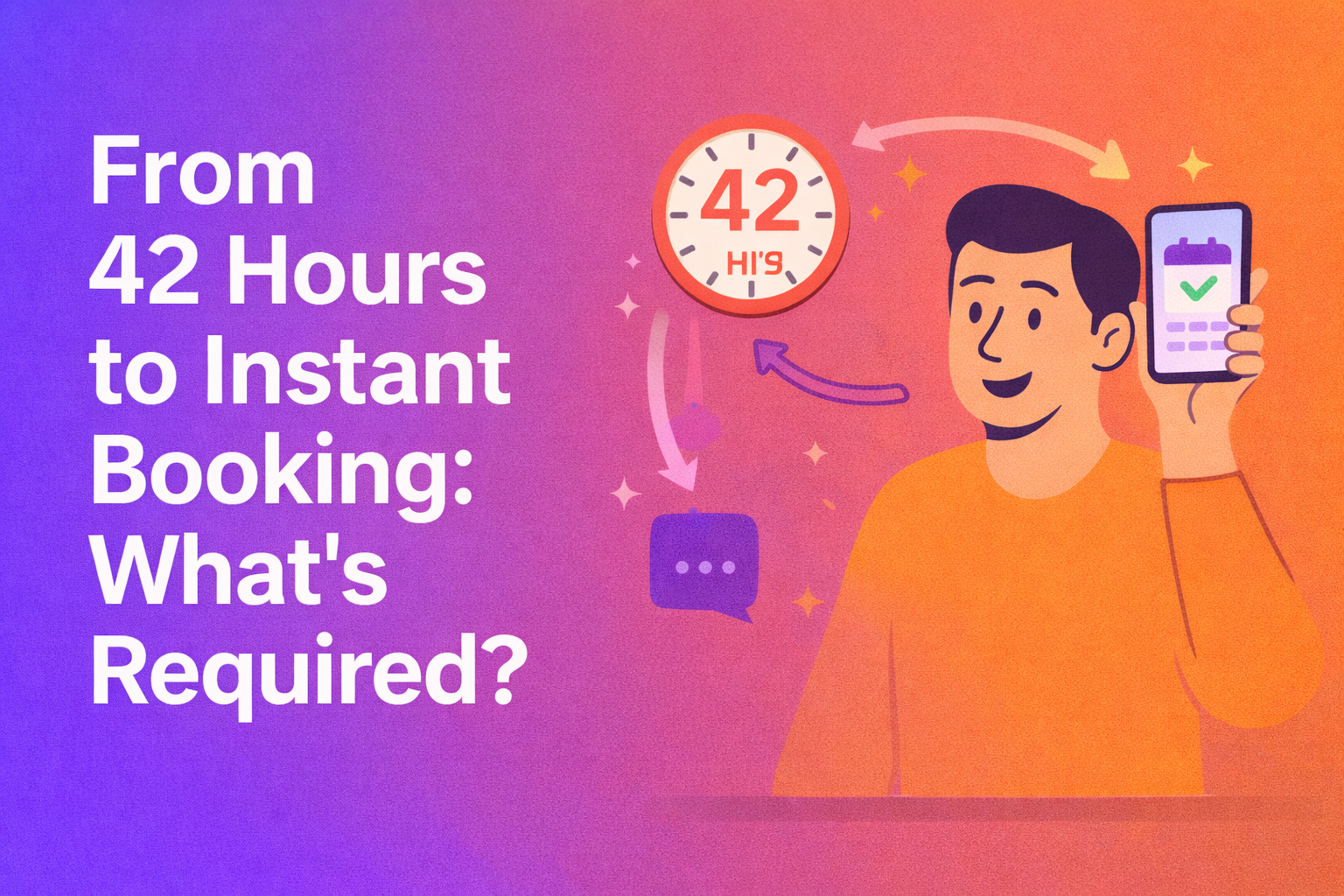If you’re a marketer working with a GTM motion that involves a demo request, you’ve most likely explored implementing a scheduler to improve conversions. If you haven’t yet, including a scheduler in some form in your funnel is the simplest way to increase revenue in a demo-led sales motion.
Think about the buying experience otherwise. You have a high intent buyer who has done the research, lands on your page, displays the intent and shares their information, and is met with a “we’ll get in touch with you” page. This is the equivalent of turning away a customer who walks into a store looking to make a purchase.
Don’t take our word for it. Read about it in the MKT1 newsletter, one of the best references for B2B marketers out there. If you’ve not subscribed, you most definitely should.

For the already convinced and the newly convinced, the most obvious next question is where to introduce the scheduling widget in the demo request flow so that it has the most impact on the pipeline generated.
The choice, as with any marketing decision, is the dreaded “depends”. What I’ll cover here is observations on each choice, whom each choice works best for, and some results we’ve seen.
Embedding a scheduler first
A scheduler-first implementation is becoming pretty common in B2B landing pages and websites. Before we go any further, this setup is not for:
- GTM motions that have any form of qualification built into it.
- Sales teams that need conditional routing.
If you need either of these, you can move on to the second part.
Here is my upfront take on this -
Making this experience as friction-free as you want it to be is a developer-heavy lift. You’ll lose some prospects without knowing who exactly they were. (I also cover your best shot at converting them. We’ve implemented this for our own sales process and see decent success with this).
This is not intended to make this seem like the wrong choice. You might be at a stage/setup where web dev availability isn’t a bottleneck and you don’t need any form of qualification or routing. If these are the cases, here is how you’ll be able to make the most out of this.
When you have a scheduler embedded upfront, your conversions are direct meetings in your sales team’s calendars, which is a great outcome.

When you get meetings instead of leads
Callout - Make sure that your scheduler integrates into your CRM or that you’ve setup a Zap to listen to each scheduled event to then create contacts/leads in your CRM). Ideally, you also want to auto-log the meeting activity against the contact/lead record.
What isn’t great is the fact that you’ll lose out on leads who end up on your website/landing page, click on a time slot, are presented with a form but don’t end up submitting the form. And this most definitely happens. (If you’re a marketer who has managed to get every single one of those clicks converted to booked meetings, say hi to the Loch Ness monster for us).
For anyone investing in Google ads with a half decent CPC, being in the dark about who ends up not booking a meeting is pretty painful.
Here is how you can alleviate some of that pain.
Create a list of companies who end up not booking
Add a de-anonymization tool like Factors or Clearbit to your landing pages that do reverse-IP lookups to identify which companies end up on your landing page.
Apart from the ones that do end up booking a meeting, you’ll get the list of companies that landed on your page, clicked on your widget (with your developers you can set up events to track those that specifically performed this action) but ended up not booking a meeting.
From here, you can go one of two ways. While we’ve found some level of success with both, the one that works out best long-term is the second one.
Step 1: Pounce
1. Have your SDRs create a list of the buying roles/champions from the ICPs in that list.
- Unlock your ICP details in a tool like Apollo.
2. Send out a hyper-personalized (not to be read as GPT generated) first email to that list.
- Generic messaging around whether they’re in the market/evaluating alternatives or looking to solve the problem that your product/service offers works best. However, I’m not the outreach expert here.
- Add them to the appropriate outreach sequence.
Here is how this worked out for us -

Step 2: Prowl
While the previous approach has its pros and instant gratification (we even got a few deals through this), it might not always work if you’re a relatively new brand in a crowded category and even otherwise at times. Here is the approach that works long-term -
After completing Step 1, rather than having your SDRs pounce, add some marketing air cover first. Here is how you can automate that:
- Set up a Zapier workflow to auto-create companies whenever your visitors are de-anonymised on your website. (If your de-anonymization tool doesn’t offer this out of the box, you’ll typically at least be able to leverage their webhooks, which Zapier can listen to and then take action.)
- Use a tool like Metamatch to pull these lists and create ad audiences which then automatically enrich them in the ad platform of your choice (Typically LinkedIn). You can also leverage Metamatch’s personal email enrichment to create audiences on Facebook as long as you have the numbers and match rates.
Once you’ve set this up, your buyer personas will have had enough brand exposure (by virtue of having seen your ads everywhere) and are more likely to open or reply to the outreach made by your SDRs.

A self-sustainable GTM motion that feeds marketing and sales efforts.
With all this, you can be rest assured that you’re doing everything you possibly can to make the most out of those precious clicks on your ads and organic visits when you have a scheduler-first approach.
The good old form first, scheduler next approach
Once you’re past your founder sales/first sales rep phase, and start scaling you’re most likely looking to do more than just improve conversions. After conversations with marketers from more than 90+ companies at different ends of this stage, this is how we’ve seen goals evolve:
- Improve conversions on the website/landing pages. (Goals vary depending on channel and acquisition model but the theme remains the same)
- Improve the quality of each conversion and as a secondary effect the signals that each conversion is sending to ad engines to optimize marketing spend. (Ad platform learning is pretty much just junk in junk out)
- Reduce sales cycles and no-show rates.
Here are some of the results we’ve seen with an approach like this -



But why am I talking about all this in the context of forms?A form-first demo scheduling experience might look like a gatekeeper for most GTM teams. There is no denying that for lukewarm prospects and probably those who drank too much of the drift kool-aid, forms might feel alienating.
What’s mostly lost in marketing around all this is the fact that with any experience you need some form of data collection to understand who you’re talking to. Even with your schedulers up front, you end up collecting the same details with a form after, but here is the catch -
The only two ways to reliably collect details about your prospect is either a form or a chatbot.
If that very mention of chatbots triggered a visceral response driven by countless experiences of having to interact with cookie consents, feature banners, and then a bot that presents a generic message, you’re already bought in.
Other than feelings, here are some objective reasons for the choice:
- With a form collecting details from your high-intent visitors first, you have a lead/contact in your CRM right away.
- You’re able to qualify each form fill based on their inputs and/or hidden enrichment, based on which you can determine whether you want to allow them to book a meeting.
Send your meeting scheduling as the conversion event to your ad platforms and you eventually get your ads delivered to audiences similar to those who are already converting. (Your offline events down the line and CRM setup also play a role. More on that soon). - With a scheduler right after the form fill, you have a prospect who has already shared their contact information and has more inclination to actually talk to you since they know you have their details already.
- Much like a scheduler first approach, you’ll still have folks who might get lost in their calendars trying to figure out when they’re available. But hey, you already have their contact information in your CRM, rather than having to figure out who it might possibly be.
Again, none of these merits make this the de facto implementation for anyone. The choice between a sophisticated setup like this and a scheduler-first setup should depend entirely on the context of your sales motion and the maturity of your marketing and sales org.
If you’re just starting off, it’s always a good call to go with the simplest implementation possible. Just get that landing page out and get those CTRs going with a way for your high intent buyers to book time on your team’s calendar.
When you’re at a point where your traffic and conversions aren’t adding up, it’s time to specialize and optimize your conversions to capture information first and present a scheduler right away.
Let RevenueHero help your team turn high-intent users into booked meeting without slowing down your funnel.












